Different types of medications may be useful at different stages of treatment to help a patient stop abusing drugs, stay in treatment, and avoid relapse. Research shows that when treating addictions to opioids (prescription pain relievers or drugs like heroin or fentanyl), medication should be the first line of treatment, usually combined with some form of behavioral therapy or counseling. Medications are also available to help treat addiction to alcohol and nicotine. Like treatment for other chronic diseases such as heart disease or asthma, addiction treatment is not a cure, but a way of managing the condition. Treatment enables people to counteract addiction’s disruptive effects on their brain and behavior and regain control of their lives. The FHE Health team is committed to providing accurate information that adheres to the highest standards of writing.
HPA axis function in alcohol use disorder: A systematic review and meta-analysis – ScienceDirect.com
HPA axis function in alcohol use disorder: A systematic review and meta-analysis.
Posted: Wed, 05 Jul 2023 07:22:49 GMT [source]
Another form of bargaining is when people start to think that they can relapse periodically, perhaps in a controlled way, for example, once or twice a year. Bargaining also can take the form of switching one addictive substance for another. Stopping drug use relapse rate for alcoholism is just one part of a long and complex recovery process. When people enter treatment, addiction has often caused serious consequences in their lives, possibly disrupting their health and how they function in their family lives, at work, and in the community.
What Is Alcohol Relapse?
By checking the medical records, the relapse cases were mentioned after finding the positive results from the urine, blood and alcohol tests. Therefore, in this study, relapse was dichotomized into being relapsed, as opposed to not being relapsed. To find out how well 16-year relapse could be predicted, we constructed a risk for relapse index based on the four risk factors identified in the regression. 1, remitted individuals with no risk factors had a 22% likelihood of relapse. The likelihood of relapse rose to 45% for individuals with one risk factor, 70% for individuals with two risk factors and 86% for individuals with three or four risk factors.
The combination of a substance abuse program and self-help group is the most effective [22,23]. This is also the time to deal with any family of origin issues or any past trauma that may have occurred. But they can be stressful issues, and, if tackled too soon, clients may not have the necessary coping skills to handle them, which may lead to relapse. The tasks of this stage can be summarized as improved physical and emotional self-care. Clinical experience has shown that recovering individuals are often in a rush to skip past these tasks and get on with what they think are the real issues of recovery.
Growth Stage
The protocol was reviewed and approved by the Institutional Review Board of College of Medicine and Health Sciences (IRB/CMHS) at the University of Rwanda (No 307/CMHS IRB/2019). Permission to conduct the study at IPC which is the branch of (CARAES) Ndera Neuropsychiatric https://ecosoberhouse.com/ hospital was obtained from the Ethical Committee of that Hospital (N° 007/CNEC/2019). This hospital is the only national and referral hospital for mental diseases in Rwanda. Data collection forms were coded and the anonymous method was used for keeping confidential.

Clients need to be reminded that lack of self-care is what got them here and that continued lack of self-care will lead back to relapse. One of the important tasks of therapy is to help individuals redefine fun. Clinical experience has shown that when clients are under stress, they tend to glamorize their past use and think about it longingly.
